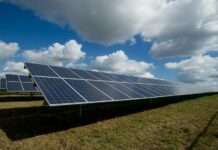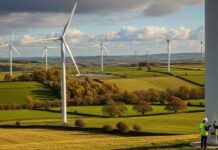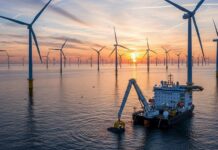Wind energy happens to be a major source of electricity across Portugal, and the wind supply chain happens to be having a robust footprint there. Although offshore wind happens to be offering novel perspectives, the speedy permitting as well as repowering of onshore wind farms happen to be the keys for the country so as to keep reaping the fruits when it comes to wind energy.
Wind energy was the biggest source in terms of renewable energy generation across Portugal last year, apparently ahead of hydropower. It went on to cover 29% of Portugal’s electricity demand. The country intends to generate 85% of its electricity by way of renewable sources by 2030.
It is well to be noted that in 2023, renewables went on to contribute 71% of Portugal’s total electricity generation; across a windy month of December, the share went on to reach over 80%. And across the 5 complete days, right from October 31 to November 6, Portugal generated more electricity than it actually required, completely from renewable sources.
More wind as well as other renewables within the energy mix happen to mean more energy security for Portugal, as it decreases the requirement to import expensive fossil fuels by way of other parts of the world. It also goes on to mean decreased electricity bills for Portuguese people. As per the study, renewables comprised for major electricity bill savings when it comes to consumers in 2022, with wind thereby being the major contributor.
The renewables sector goes on to employ almost 45,000 people across Portugal, which are both direct and indirect jobs. Wind energy goes on to offer jobs for approximately 20,000 people. Simens Gamesa as well as ENERCON go on to produce wind turbine blades in Vagos as well as Viana do Castelo, respectively, and CS Wind goes on to produce steel towers and offshore foundations in their Sever do Vouga as well as Gafanha da Nazaré factories. It is well to be noted that Vestas operates an R&D and design center in Porto.
Almost all the wind farms across Portugal are onshore, and the country wants to touch 10.4 GW of onshore wind capacity by 2030, which is indeed up from 6 GW as of date. Repowering wind farms that go on to reach the end of their lives between now and the end of the decade and replacing old turbines with new, as well as more efficient ones, should surely help them reach this objective. Repowering almost goes on to triple the electricity output of a wind farm while at the same time reducing the number of turbines by a quarter, all across the same location. And since older wind farms happen to be usually at the best locations, repowering them by way of more powerful machines can really bloat the game.
However, it is permitting that will actually make the difference. The permitting process when it comes to both new as well as repowered wind farms is still very slow and too intricate, both in Portugal and throughout Europe. It is well worth noting that the new EU rules should help quicken the process, and the recent Wind Power Package of the European Commission has certain provisions to digitalize permitting processes.
As a matter of fact, Portugal happens to have just one small offshore wind farm: WindFloat Atlantic, which is a 25 MW floating wind pilot project. But Lisbon wants to make the utmost use of its abundant wind resources off the Atlantic coast and capture more offshore wind. The country launched the first phase of an offshore wind auction in November 2023. The idea was to get 3.5 GW of capacity, which was mostly floating wind.
Because of the development of offshore wind, the Portuguese ports will go on to play a very progressive role. Averio, Figueira da Foz, and Setubal ports all happen to be members of WindEurope’s Ports Platform, in which 35 European ports having active operations as well as interests in offshore wind go on to share the best practices and also engage with industry as well as policymakers.


































